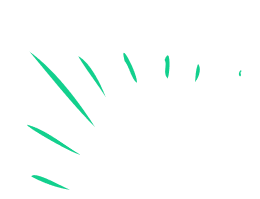Educate animal owners
Create an illustrated pamphlet for pet owners explaining safe feeding, grooming, and exercise tips. Interview owners and clearly summarize findings.



Step-by-step guide to create an illustrated pamphlet for pet owners
HOW TO TAKE CARE OF PETS 🐾 Learn about animals 🐶 Lingokids Cartoons
Step 1
Gather all your materials and place them on a table so you are ready to work.
Step 2
Decide which pet type(s) you will teach about (for example dog cat or rabbit) and write them at the top of your notebook.
Step 3
Write six simple interview questions that ask about safe feeding grooming exercise and any safety tips.
Step 4
Ask an adult to help you find and schedule two pet owners to talk with.
Step 5
Talk to the first pet owner and ask your six questions.
Step 6
Write clear notes from the first interview in your notebook.
Step 7
Talk to the second pet owner and ask your six questions.
Step 8
Write clear notes from the second interview in your notebook.
Step 9
Read both sets of notes and write down three common tips you heard across the interviews.
Step 10
Sketch a simple pamphlet layout on paper with three sections titled Feeding Grooming and Exercise.
Step 11
Write a short clear summary for the Feeding section using your notes and the common tips.
Step 12
Write a short clear summary for the Grooming section using your notes and the common tips.
Step 13
Write a short clear summary for the Exercise section using your notes and the common tips.
Step 14
Add fun drawings and color to each section to make your pamphlet easy and attractive to read.
Step 15
Share your finished pamphlet on DIY.org.
Final steps
You're almost there! Complete all the steps, bring your creation to life, post it, and conquer the challenge!


Help!?
What can we use instead of a notebook, table, or colored pencils if those are hard to find?
If you don't have a notebook or colored pencils for writing your interview notes and coloring the pamphlet, use loose paper or a printable template and color with crayons or markers on a clipboard or your lap instead of a table.
What should we do if we can't find or schedule two pet owners or if the interviews feel difficult?
If you can't schedule two pet owners or feel nervous during the interviews, ask a parent to contact a local vet or shelter for introductions, do one short video/phone interview, practice your six questions beforehand, and take bullet-point notes to ensure you can later write clear notes in your notebook.
How can the activity be adjusted for different ages or skill levels?
For ages 5–7, ask three simple questions and draw the answers in the notebook; for ages 8–11, stick to the six questions and sketch the pamphlet with bold pictures; and for 12+ add a quick online fact-check after both interviews and create a digital pamphlet to post on DIY.org.
How can we make the pamphlet more informative or personal after finishing the three section summaries?
To enhance your Feeding, Grooming, and Exercise sections, add small photos or direct quotes from the pet owners, ask a vet to review the three common tips for safety, and laminate or fold your colored layout before sharing it on DIY.org.
Watch videos on how to create an illustrated pamphlet for pet owners
Learn How To Care For A Pet (Beginner's Guide to Pet Care)
Facts about pet care education for kids
✂️ Regular brushing reduces shedding and mats, and helps you spot skin or parasite issues early.
📝 Interviewing owners and keeping simple logs (feeding, grooming, exercise) helps tailor safe care to each pet.
🐶 Many dogs do best with daily walks or playtime — exercise helps prevent weight gain and boredom.
🐱 Most adult cats are lactose intolerant; plain water is the safest drink for them.
🍽️ Overfeeding and too many treats are common causes of pet obesity and related health problems.
How do I create an illustrated pamphlet to educate pet owners about safe feeding, grooming, and exercise?
What materials do I need to make an illustrated pet-care pamphlet and conduct interviews?
What ages is this illustrated pamphlet project suitable for?
What are the benefits of having children create pet-care pamphlets?


One subscription, many ways to play and learn.
Only $6.99 after trial. No credit card required



